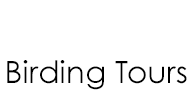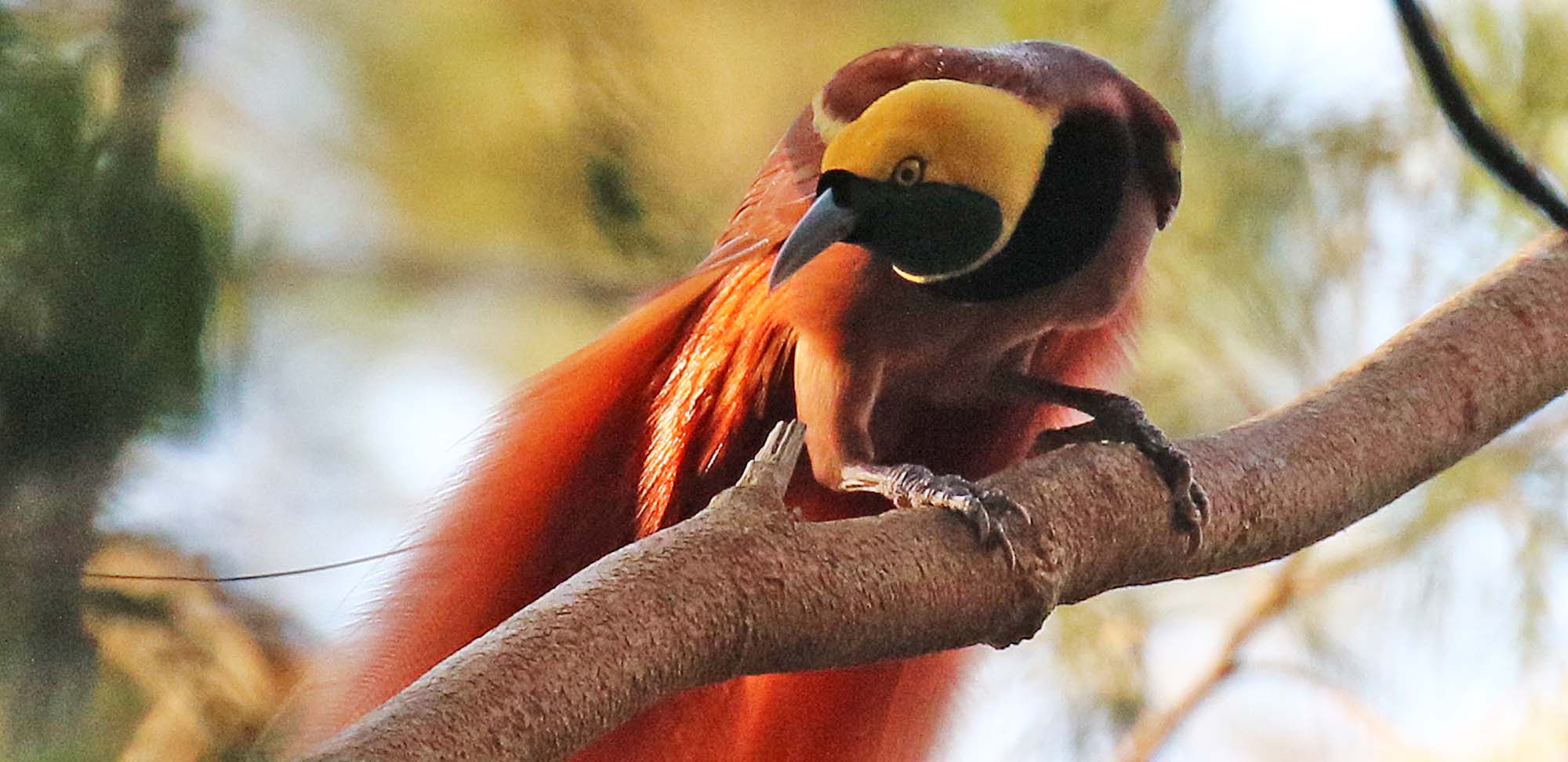New Guinea is a 1400-mile-long island, the largest tropical island and the world's second largest overall (after Greenland), lies less than 400 miles below the equator. Here in the warm latitudes of the South Pacific, New Guinea represents the northern limit of the Australasian Region, and a major center for avian evolution with well over 400 endemics. It is in the massive backbone cordillera of New Guinea that the great mountain system extending from the Himalayas through Indonesia makes its easternmost thrust into the Pacific.
New Guinea's location at the juncture of two vast biogeographic regions has made it a crossroads on the pathway of evolution. There is a high degree of specialization to be found in virtually all forms of life, from entire families of minute invertebrates living on the mossy backs of weevils, to the more than 800 distinct languages spoken by native peoples. And New Guinea is the land of the fabled birds-of-paradise and bowerbirds. These two fascinating groups have evolved to occupy practically every habitat on this great island, from verdant rainforest and dry savanna to montane forest at treeline on high mountain peaks.
Our birding tour centers around locating as many birds-of-paradise as possible. Among them are some of the most highly sought birds on Earth: King-of-Saxony, Twelve-wired, Raggiana, Greater, King, and Blue birds-of-paradise, the elegant Ribbon-tailed Astrapia, the huge Brown Sicklebill, and many more, each so uniquely plumed as to seem unrelated to the others. Parrots, pigeons and fruit-doves, cuckoos, and kingfishers are also particularly well represented, and most have elaborate and beautiful plumages. Some less-familiar groups of birds form the bulk of the passerine avifauna: spritely fairywrens, gemlike pittas, cuckooshrikes, whistlers, logrunners, babblers, and honeyeaters. There are seven endemic families too, in berrypeckers and longbills, Crested and Tit berrypeckers, satinbirds, and five species of birds so unique they've recently been split off into four more families: Wattled Ploughbill, Mottled Berryhunter, Blue-capped Ifrita, and the two species of melampitta. We stand a good chance of seeing representatives of all seven of these families on our tour.
Over the centuries, the island of New Guinea developed a human population equally as colorful and diverse as its bird life. Amid the isolation of forested mountains, more than 800 languages developed, representing some twenty percent of the world's languages. Here, far more than in most places, the native peoples understand and appreciate their bird life, an attitude strongly reflected in their art and customs. Today, dress is mostly western and the housing increasingly so, but there is still ample evidence of cultures in recent transition.
Many people have the impression that a birding tour to Papua New Guinea must be unusually demanding or uncomfortable. For all of Papua New Guinea's remoteness, however, travel is surprisingly easy and food and accommodations are mostly good to very good. While we spend some time in the humid lowlands (which can be hot if sunny!), more than half of our birding is done in the wonderfully comfortable foothills and highlands, with cool nights and pleasant days.
Our tour will sample the Moresby savannas; lowland and foothill rainforest on the south slope near Port Moresby, Kiunga, and Tabubil; and montane forest and grasslands of the Central Highlands at Rondon Ridge and Kumul Lodge (where the feeders are a great place for photography), both near Mt. Hagen.
We offer an optional five-day extension to the island of New Britain after the main tour. There we'll seek numerous specialties, from Melanesian Scrubfowl and Black-headed Paradise-Kingfisher to Red-knobbed and Finsch's imperial-pigeons, Blue-eyed Cockatoo and, we hope, the Golden Masked-Owl, among others.
Select the KEY INFO tab or click here for our itinerary plus space requests, status, fees, limits, and guides for any departure.
Client comment
"Papua New Guinea had long been on my list of countries to visit. It is also a difficult country to visit on your own for numerous reasons. Field Guides offered a good itinerary at a good time. Overall, it was a great trip. Jay VanderGaast is a fantastic guide; very personable, very competent, well familiar with the terrain and local sensibilities, and a fine traveling companion. The birds were superb. The rest of our traveling group were great to be with." J.T., PAPUA NEW GUINEA tour participant
"This was our eighth birding tour with Field Guides, and it was a wonderful experience, as usual. Two things are superior about Field Guides tours: 1) the tour leadership skills and social skills of the guides, and 2) the superior quality of the bird sites chosen, accommodations, and transportation.We have loved Field Guides birding tours from the beginning and have had no reason to try another company. And by the way, the fact that Field Guides is a collective ownership organization is something we value and respect." R.K., PAPUA NEW GUINEA tour participant


